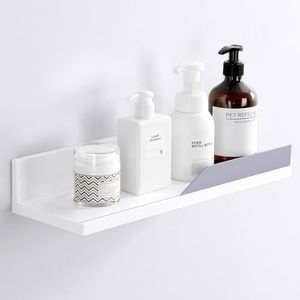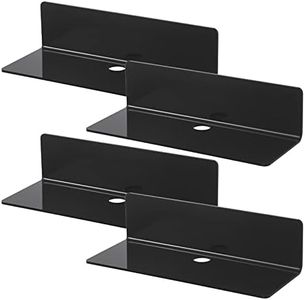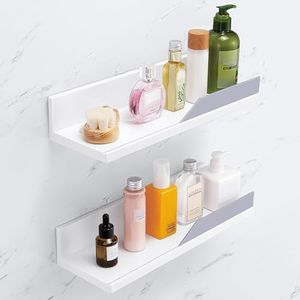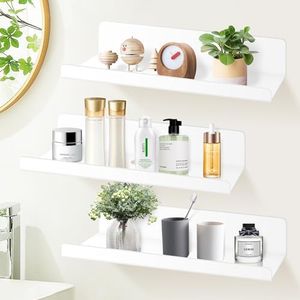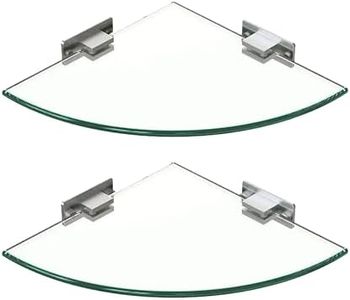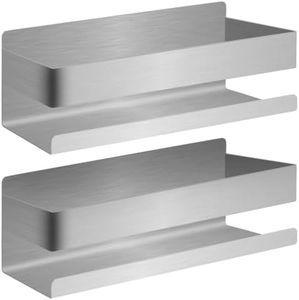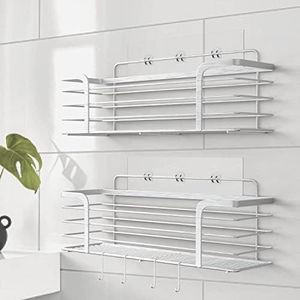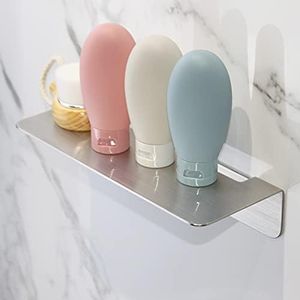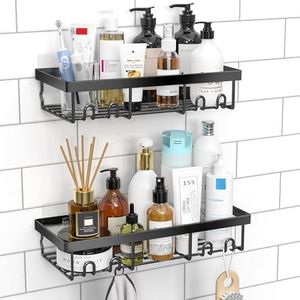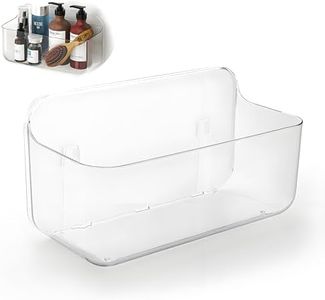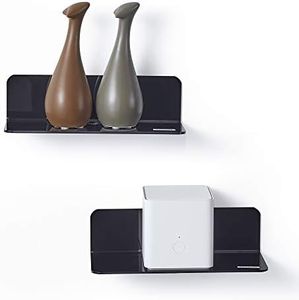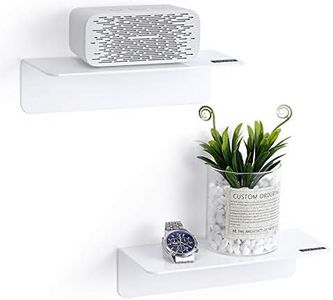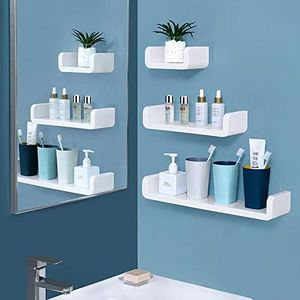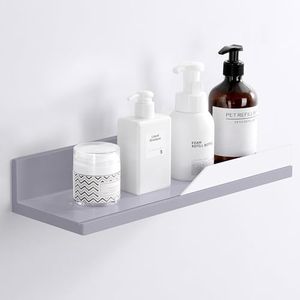We Use CookiesWe use cookies to enhance the security, performance,
functionality and for analytical and promotional activities. By continuing to browse this site you
are agreeing to our privacy policy
10 Best No Drill Shelves
From leading brands and best sellers available on the web.Buying Guide for the Best No Drill Shelves
No-drill shelves are a popular choice for those who want to avoid making holes in their walls, whether you're in a rental property, want to preserve delicate surfaces, or simply prefer a flexible and easily adjustable storage option. When choosing a no-drill shelf, think about where it will go, what you'll put on it, and your wall type – these will shape which model is best for you. Understanding the key specifications will help you choose a shelf that’s stable, practical, and safe for your needs.Mounting MechanismThe mounting mechanism is how the shelf stays attached to your wall without drilling. Common examples include adhesive strips, suction cups, tension rods, or locking clamps. This is important because some mechanisms hold better on certain surfaces than others; for example, suction cups work best on smooth tiles, while adhesives can struggle on textured surfaces. When you examine the mounting options, divide them into adhesives (for lighter, temporary loads), tension (great for niches or between walls), and clamps (for sturdy, semi-permanent installation). Pick a mounting method that matches both your wall surface and how often you might move or adjust the shelf.
Weight CapacityThis spec tells you how much weight the shelf can safely hold. It matters because overloading a shelf can not only damage your belongings but also risk damage to your wall or make the shelf fall down. Weight limits for no-drill shelves often start from a few kilograms (good for toiletries or small décor), up to 10kg or more for heavier-duty models (suitable for books or kitchen supplies). Consider what you plan to store – if mostly light items, a lower capacity is fine, but for heavier items, look for shelves rated for higher weights and always stick to the recommended maximum loads.
Shelf MaterialThe material of the shelf affects its appearance, durability, and suitability for various environments. Materials include plastic (lightweight and water-resistant, best for bathrooms), metal (strong and modern-looking, but may rust if not treated), or wood (classic style, though may warp with moisture). If you need a shelf for a humid area like a bathroom or kitchen, pick water-resistant materials. For more decorative or visible areas, choose the material that matches your décor and durability needs.
Shelf Size & DimensionsThe size and dimensions tell you how much space you have to store your items and if the shelf will fit in your intended spot. This is key because a shelf that’s too large won’t fit, and one that’s too small may not be useful. Dimensions usually include width, depth, and height. Measure your available wall space and decide what you need to store – pick a compact shelf for tight spaces, or a larger one if you have bigger storage needs or want to display more items.
Wall CompatibilityWall compatibility indicates which types of surfaces the shelf is designed to attach to effectively. Not all mounting methods work on all wall types; for example, glass, tile, painted drywall, and textured wallpaper each have unique requirements. Many shelves specify suitable surfaces. Always check if your target wall is compatible with the shelf's mounting mechanism. If your walls are painted or textured, look for products made for those surfaces; otherwise, adhesion or suction may fail.
Removability and ReusabilityThis refers to how easily the shelf can be taken down and whether it can be used again in a new location. Some no-drill shelves are single use, while others let you remove and reinstall them multiple times. If you're renting or like to rearrange, look for options with reusable mechanisms and minimal wall residue or marks. If you want a more permanent solution, removability may not matter as much.
